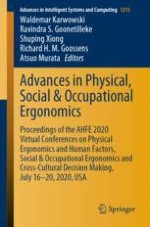2020 | OriginalPaper | Buchkapitel
A Convolutional Neural Network Model to Classify the Effects of Vibrations on Biceps Muscles
verfasst von : Jen-Yung Tsai, Yih-Kuen Jan, Ben-Yi Liau, Raden Bagus Reinaldy Subiakto, Chih-Yang Lin, Rimuljo Hendradi, Yi-Chuan Hsu, Quanxin Lin, Hsin-Ting Chang, Chi-Wen Lung
Erschienen in: Advances in Physical, Social & Occupational Ergonomics
Aktivieren Sie unsere intelligente Suche, um passende Fachinhalte oder Patente zu finden.
Wählen Sie Textabschnitte aus um mit Künstlicher Intelligenz passenden Patente zu finden. powered by
Markieren Sie Textabschnitte, um KI-gestützt weitere passende Inhalte zu finden. powered by
